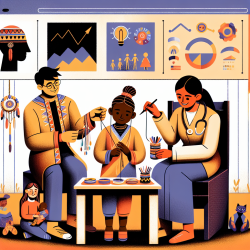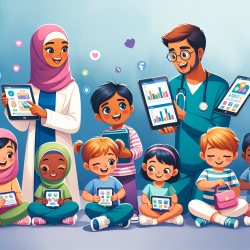Introduction
As a speech-language pathologist dedicated to creating positive outcomes for children, it is crucial to explore diverse methodologies that enhance therapeutic practices. The research titled Traditional crafting as a catalyst for Indigenous women’s intergenerational cohesion and wellness: a Canadian perspective offers valuable insights that can be integrated into speech therapy practices to foster intergenerational cohesion, cultural connectedness, and overall wellness.
Understanding the Role of Traditional Crafting
The study highlights the profound impact of traditional crafting on Indigenous communities, emphasizing its role in transferring cultural teachings from Elders to younger generations. This process not only strengthens cultural identity but also enhances social connectedness and individual well-being. As practitioners, incorporating elements of traditional crafting into therapy sessions can provide a holistic approach to speech and language development.
Implementing Crafting in Therapy Sessions
Integrating traditional crafting into speech therapy can be done through various methods:
- Storytelling and Language Acquisition: Utilize traditional stories and songs to enhance language skills. This approach not only aids in language development but also connects children to their cultural heritage.
- Artistic Expression: Encourage children to express themselves through crafting activities such as beading or weaving. This can improve fine motor skills, enhance creativity, and foster a sense of accomplishment.
- Intergenerational Workshops: Organize workshops where children can learn crafting skills from Elders. This interaction promotes intergenerational bonding and provides a supportive environment for language learning.
Encouraging Further Research
While the current study provides a foundational understanding of the benefits of traditional crafting, further research is needed to explore its specific impact on speech and language development. Practitioners are encouraged to conduct studies that examine the efficacy of crafting-based interventions in diverse cultural contexts.
Conclusion
Incorporating traditional crafting into speech therapy offers a unique opportunity to enhance therapeutic outcomes by fostering cultural connectedness and intergenerational cohesion. By embracing these practices, practitioners can create a more inclusive and effective therapeutic environment that respects and celebrates cultural diversity.
To read the original research paper, please follow this link: Traditional crafting as a catalyst for Indigenous women’s intergenerational cohesion and wellness: a Canadian perspective.










